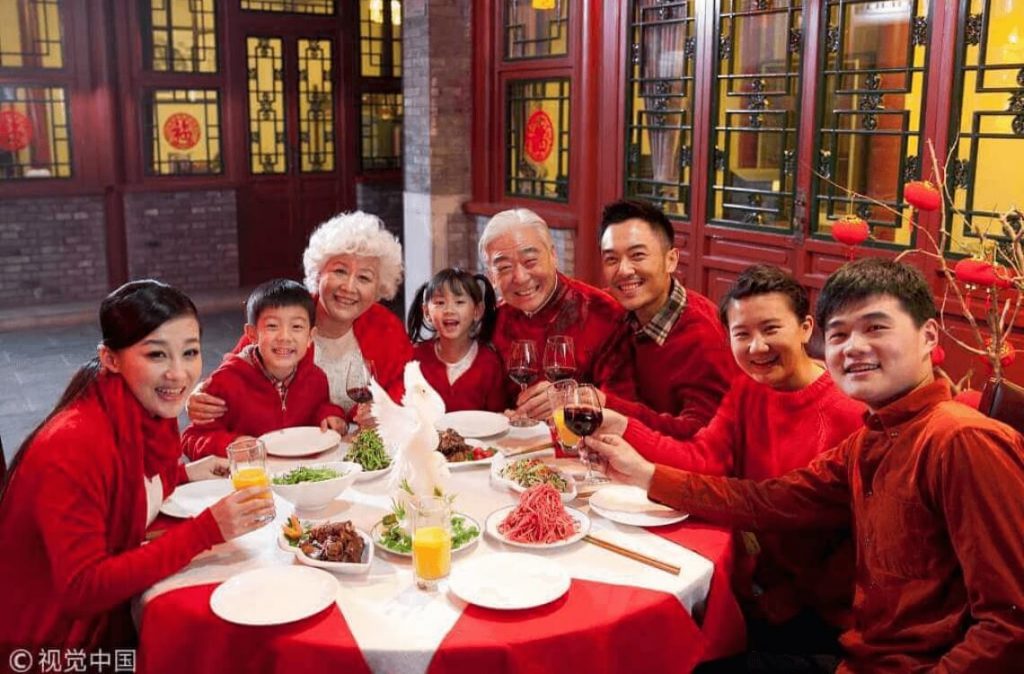The Reunion Dinner celebrated every Lunar eve, or the Chinese New Year is the most auspicious and important family gathering of the year.
Family members near and far, return to ancestral homes to rekindle ties and welcome together in the New Year.
With many working in big cities, this annual trip home is like a pilgrimage back to one’s roots.
As with any family gathering, the celebration plays an important part in the festivities.
Therefore, to ensure an auspicious year, each dish served is rooted in tradition and has a profound significance.
Since many Chinese words have a dual meaning, food choices are pivotal.
While each country boasts its own cultural traditions, here are some that can be found in Malaysia.
Yee Sang
Our very own world famous Yee Sang is a must-have to ring in the New Year.
Traditionally, served on the 7th day of the New Year, known as “Renri” or “Everybody’s Birthday”.
Its demand now gives rise to menu offerings long before the season’s celebrations begin.
While “Yee” means fish, it also translates into prosperity. “Sang” means raw, but it can also mean to prosper.
There are many varieties of yee sang out there, but the more common ones have a generous variety fruit, vegetables, jellyfish, and herbs, delicately topped with raw fish, soaked in lime juice.
Plum and hoisin sauces followed by sesame oil are poured over the salad before crackers and crushed peanuts.
Every ingredient has meaning. The pomelo, for instance, represents good luck, white radishes for increasing fortunes, and crackers for an abundance of gold. Plum sauce is the sweetness of life.
When everything is ready, everyone will take part in the “Loh Sang” or toss the salad. As the salad is tossed (the higher the better), good wishes for an auspicious New Year are invoked.
Fabulous Fish
Besides the Yee Sang, the fish is another staple at the table. Preparation depends on the gastronomic preferences of each family.
Fish represents continued prosperity and, as such, it should not be finished. This ensures that prosperity lasts from one year to the next.
Some traditions do not allow the fish to be flipped over. Rather, the bone should be removed in order to get to the flesh below. Flipping the fish portents an accident in the New Year.
Juicy Prawns
In Cantonese, the word for prawns is “har”. Reminiscent of laughter and happiness, this is a delightful staple to the feast.
Sang Choy
“Choy” in Cantonese, has the dual meaning of vegetable and wealth. While ‘“Sang Choy” is lettuce, “Sang” can also mean vitality.
Leeks or “Suen” translates as counting and planning, which are essentials to the creation and maintenance of wealth. The spring onion, or “Choong” is translated as progress.
Must-Have Mushrooms
Dried Shitake mushrooms are also pivotal, as the name means longevity.
To add a depth of richness, abalone, sea cucumber and fatt choy are excellent additions. Abalone means “definite good fortune” while sea cucumber is translated as growth in Mandarin.
Fatt Choy is a dried black moss that looks like a hair. Don’t be fooled though, it is a delicious accompaniment to any dish.
In Cantonese, people wish each other Kong Hee Fatt Choy during the New Year. “Fatt Choy” also means prosperity.
Nian Guo
Nian Guo or Kuih Bakul is another seasonal favourite, believed to bring prosperity.
Made from rice flour, this sticky, sweet dessert, whether eaten plain, deep-fried with yam or steamed and served with shredded coconut, is the perfect ending to the feast.
Pineapple Tarts
The Hokkien call the pineapple “Ong Lai” which literally translates as “fortune comes”. It is no wonder then that the pineapple has a place of honour during the season.
Seasonal goodies like pineapple tarts are plentiful for everyone to enjoy.
Pomelo
Pomelos are in season now.
Whether it is used as a key ingredient in Yee Sang, eaten fresh or as an offering in the Temple, this fruit is not to be missed.
Pomelos mean abundance and prosperity in wealth, children, health, and family unity.
Mandarin Oranges
Mandarin oranges are known as “Kam” which translates as gold.
As such, when giving gifts, or Ang Pao (Lucky Money), those oranges exchange hands, always in multiples of two. Symbolically, we give gold and receive gold, thereby spreading prosperity all around us.
The variety of these oranges is astounding in the season. Each family has its own favourites.
They are sweet and refreshing, especially on hot days. However, the Chinese believe that over-indulging in them can lead to a cough.
Love Letters
It would be remiss not to mention an all-time favourite, love letters.
Traditionally, these delicious thin paper crepes were made over hot charcoal braziers with everyone pitching in to lend a hand.
They were named as they used to contain messages of love. When exchanged and eaten, the tokens of affection were considered to be accepted.
In Chinese culture, the saying, “you are what you eat” is really apt!
So when you are enjoying the foods of the New Year, remember that every morsel brings a good wish and a blessing.
Wishing one and all a very Happy and Prosperous New Year. May the Year of the Metal Ox bring you good fortune, health, and happiness!
Gong Xi Fa Cai! Xie Nian Kuai Le!
